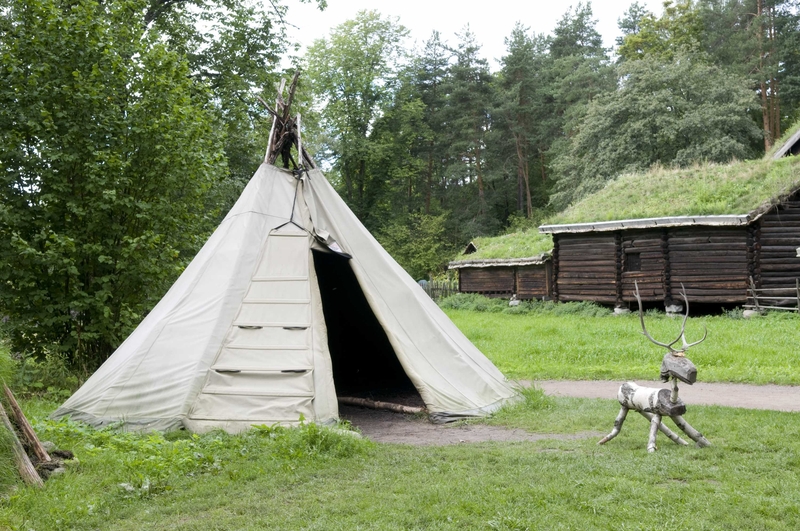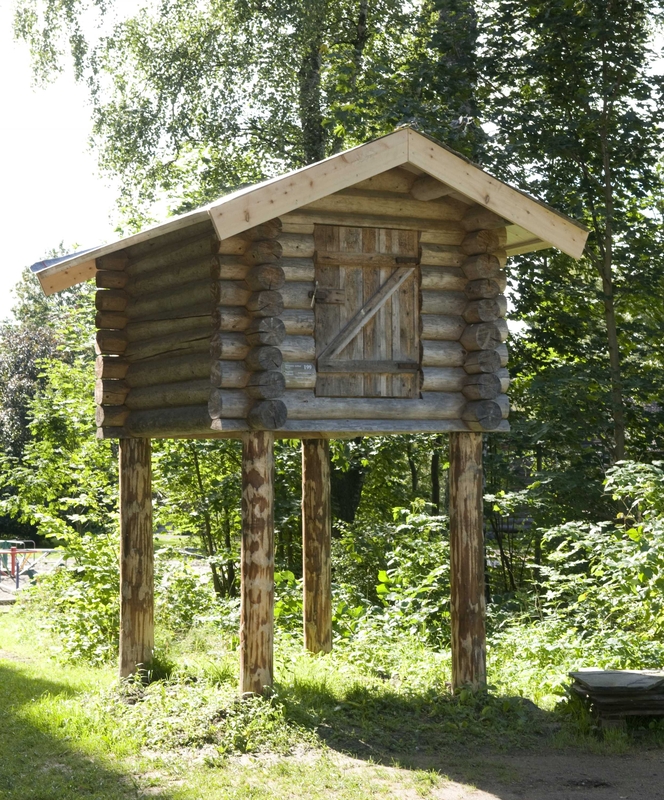 Image from digitaltmuseum.org
Image from digitaltmuseum.org The tent
Seasonally assembled and dismantled this tent, or lavvo (lávvu), set up on the Sami settlement at various times of the year, is a modern version produced by a firm in Kautokeino. It is made of canvas with a bottom section of nylon to guard against dampness seeping up from the ground beneath and damaging the canvas.
Such tents are used by some reindeer-herding Sami during migrations from winter to summer grazing areas, but are otherwise mostly used for recreational purposes. The tents are also very popular for recreational purposes among non-Sami Norwegians and often used by schools and kindergardens.
The cloth of many of the modern tents is held up by a construction of metal tent poles. Here traditional birch-wood poles are used and locked together at the top by forks in the branches. This construction is relatively simple, and this kind of tent was mostly used during shorter periods while herding or moving. The museum’s lavvo is used for different activities and does not illustrate any particular historic period.
 Image from digitaltmuseum.org
Image from digitaltmuseum.org The storehouse
The storehouse, or buvrie, stands on poles or, often, on still rooted tree trunks. The Sami of the far north also used a njalla, a type of storehouse built on top of a two- to three-meter-high tree trunk. A slanted log with steps was then used as a ladder and removed on departing from the site. The Southern Sami storehouse, usually lower and larger than those in the north, stood on two, three or four sturdy poles. This storehouse was built by Jonas Danielsen.